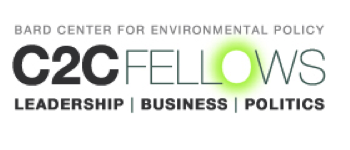Guest Post by C2C Fellow Courtney Chennault, University of Miami ’18

For the past year O.T. Genasis’ popular and relentless lyrics, “you need to cut it,” have blasted on the radio and transformed into the hashtag that has taken over the Internet. #CutIt signifies whatever the user deems to be “way too high.” The same sentiment certainly applies to the high levels of carbon emissions polluting our atmosphere. Carbon is emitted into the atmosphere upon the combustion of fossil fuels like coal and natural gas, and as a result of our society’s heavy dependence on these fossil fuels to produce energy, we emit excessive levels of carbon. This carbon traps heat and contributes to global climate change, which is why cutting carbon emissions can help combat climate change.
Today, two legislative policies that aim to cut carbon emissions from large emitters like power plants and other industrial facilities have emerged as viable #CutIt strategies for the United States. The first policy, an Emissions Trading System (ETS), known as a cap-and-trade system, “caps” the amount of carbon that facilities can release into the atmosphere. The second policy imposes a carbon tax on the production of items like gasoline based on the amount of carbon emitted during their production. When presented with both of these policy options, many environmentalists, myself included, favor the carbon tax because it allows for consumers, through their buying habits, to determine the success and availability of carbon-laden products on the market. Additionally, the carbon tax is preferable to a cap-and-trade system because it lessens the possibility of biased enforcement by government officials.
Under the carbon tax, according to CarbonTax.org, items produced by burning natural gas, coal, and other fossil fuels will be taxed based on the amount of carbon emitted during production. Therefore, because the combustion of natural gas releases less carbon into the air than the combustion of coal, items produced by the burning of natural gas will incur a smaller tax than those produced by the burning of coal. In this sense, the carbon tax is proportionate.
A favorable aspect of carbon tax policies over cap-and-trade policies is that they allow consumer behavior to determine which fossil fuel-based products stay on the market and which are replaced by eco-friendly alternatives. Though directly levied on the producer, the carbon tax will likely affect the consumer’s wallet through higher gas prices or an increase in the monthly heating bill, for instance. Ultimately, prices will increase only as much as the consumer is willing to pay, meaning that if consumers refuse to pay higher gas prices, there might be an increase in demand for electric cars that emit no carbon, or car companies might increase their own emissions-free vehicle production.
A significant number of environmentalists and economists also believe that a carbon tax is the most effective way to regulate and ultimately decrease our nation’s carbon emissions without bias. Though the cap-and-trade system sets hard, non-arbitrary emission standards, many activists find the cap-and-trade system problematic because it may leave underrepresented communities with the short end of the stick. For example, as explained by the The World Bank, if a facility wants to emit more than its allowance, it can buy credits from a facility that emits less than its “cap.” This ability to “trade” credits thus creates an opportunity for facilities to avoid decreasing their carbon emissions as long as they emit less than the “cap” or decide to buy emissions credits. Furthermore, government regulators who monitor the facilities’ emissions could allow facilities in underrepresented communities to buy multiple emissions allowances and emit copious amounts of carbon thereby prioritizing business over the health of those residents… do the Flint Water Crisis and the Dakota Access Pipeline ring a bell? Because the carbon tax is proportionate based on each product’s scientifically proven carbon footprint, it is a policy option that does not allow for such bias.
In addition to being the better policy option to decrease carbon emissions, Forbes Magazine explains how a carbon tax could have social benefits if the government converts the tax revenues into tax rebates for households and allots some revenues for social welfare programs. Countries all over the world, including China, India, Switzerland, and Zimbabwe, have already implemented carbon taxes. Although some states have their own carbon tax, there is no national carbon tax in the U.S. Citizen’s Climate Lobby (CCL) is on the forefront of the push for a national carbon tax. Get involved with Citizen’s Climate Lobby to demonstrate your support of a national carbon tax in the fight against climate change and help bring a new meaning to the lyrics, “you need to cut it!”

